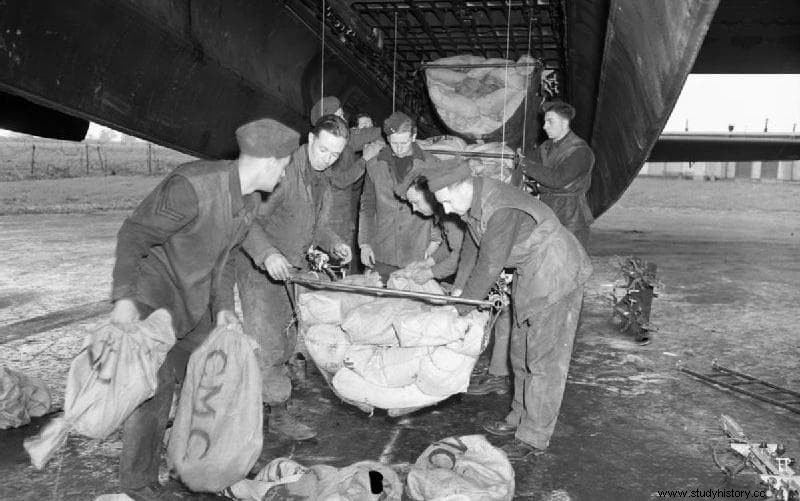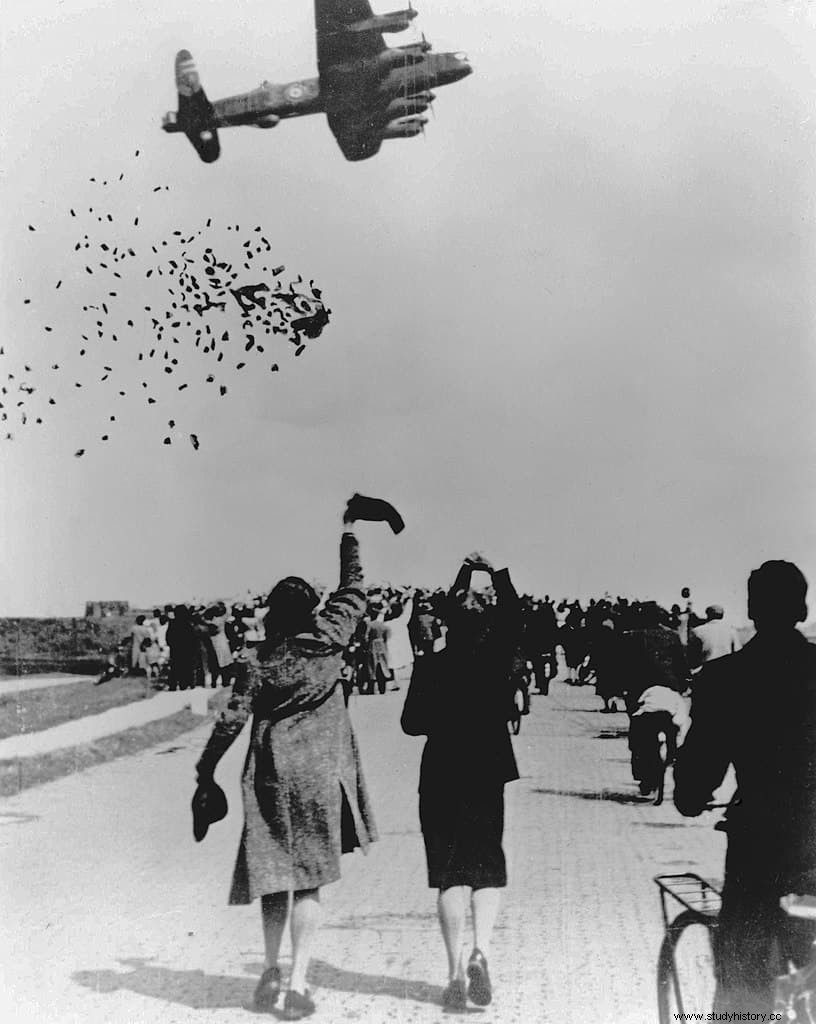At the end of April 1945 and for ten days, the Allies carried out the most dangerous air mission operated by bombers in the entire Second World War. And it wasn't about bombing strategic targets, on the contrary, it was about a humanitarian mission.
In the spring of that year 1945, with the Allied armies already close to Hannover and beyond Frankfurt, much of the Netherlands was still in German hands, including cities such as Amsterdam, Rotterdam and The Hague, under German control. more than 120,000 Nazi soldiers.
Some 3.5 million Dutch people were suffering from the effects of the food blockade imposed by the Germans as a result of the railway strike at the end of 1944. In addition, the destruction of dikes had flooded a good part of the coastal farms. Hunger spread among the population who resorted to eating fried tulip bulbs and even cooked their own hair to later drink the water with the proteins. In April 1945 the British estimated that more than half a million Dutch people were on the verge of death.

The Dutch royal family, exiled in London, made emergency requests to the British and American governments to act to prevent a catastrophe such as not seen in Western Europe since the Middle Ages . Roosevelt, who would die weeks later, responded on March 21 to Queen Wilhelmina that he would not leave the country from which he came from.
On April 29 the British began their own operation, called Manna (for biblical manna). Two Royal Air Force Lancaster bombers manned by Britons, Australians, New Zealanders, Poles and Canadians brought essential food to the Netherlands. Two days later, on May 1, just a few hours before Hitler committed suicide, the first American B-17 Flying Fortress launched Operation Chowhound .
In his book on the operation Stephen Dando-Collins states that this was the most dangerous mission carried out by bombers in the entire war . It seems strange because it was a humanitarian mission. But several factors must be taken into account.
The first is that the crews did not know what they were going to find. They had been told that the Germans had agreed not to open fire on them. But in reality the agreement was not signed until four days after the mission began.

The bombers then had to fly very low, between 90 and 120 meters in altitude, and fly as slowly as possible in order to drop the aid. If the Germans had opened fire in those conditions the chances of survival would have been minimal.
But the Germans complied. The Nazi governor of the Netherlands, Arthur Seyss-Inquart, had given the order not to open fire on aircraft flying in specific air corridors, possibly already knowing what awaited him.
Thus, for ten days, pilots accustomed to flying at more than six thousand meters of altitude flew so low that they could establish visual contact with the German soldiers who followed their course with their anti-aircraft weapons. And also with the Dutch who greeted them as they deposited bags and boxes with chocolate, margarine, coffee, powdered milk, salt, cheese and flour on fields and airfields throughout the country.
At the height of the mission, more than 900 bombers flew through the Dutch skies on a humanitarian mission. None were shot down, although they were hit by sporadic fire. Only one crashed due to a mechanical failure, killing all 11 occupants.
In total the British made more than 3,000 flights and the Americans more than 2,200. More than 11,000 tons of food were transported, saving thousands of lives and setting the precedent for the Berlin airlift in 1948 and all the humanitarian missions that were to come years later.
Seyss-Inquart, the Nazi governor who gave the order not to shoot, was tried and convicted as a war criminal at Nuremberg, and later executed.
